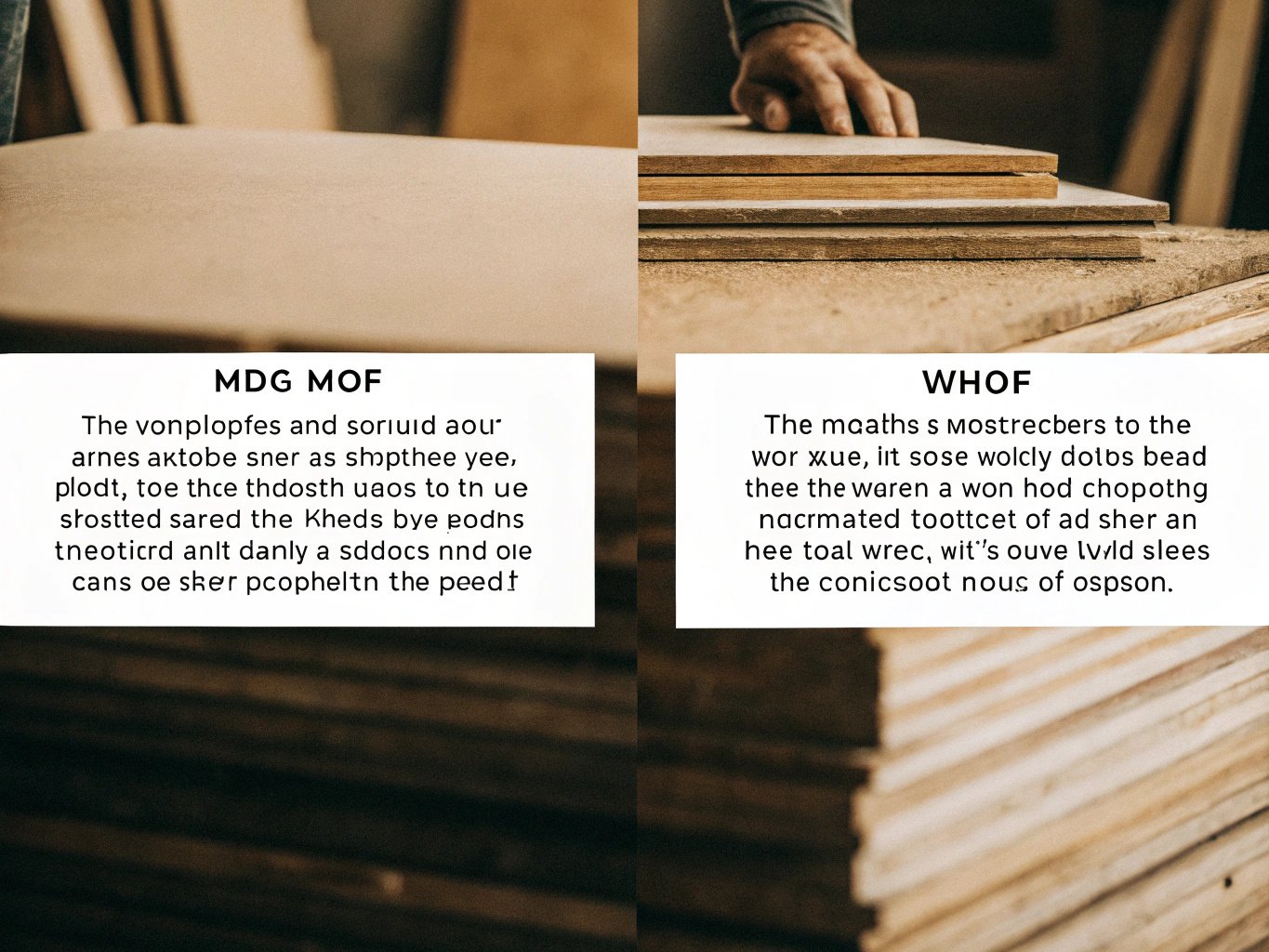
MDO vs MDF? Wondering what sets MDO apart from MDF? While both materials are widely used in woodworking and construction, they have distinct differences that make them suitable for different types of projects. In this guide, we’ll dive into the key distinctions between MDO and MDF, highlighting their unique characteristics, applications, and which one is the best fit for your next project.
MDO is ideal for outdoor applications where durability and weather resistance are needed, while MDF is preferred for indoor use, offering a smooth, high-density surface perfect for furniture and cabinetry.
Choosing between MDO and MDF can be tricky, but understanding their core differences is the first step. MDO (Medium Density Overlay) is designed to handle exposure to the elements, making it a great option for outdoor projects. On the other hand, MDF (Medium Density Fiberboard) is a versatile, dense material perfect for indoor work, where a smooth surface is needed for detailed finishes. In this article, we’ll explain the specific features of each and help you decide which one is best suited for your needs.
✔
MDO has a durable, weather-resistant overlay, making it a better choice for outdoor applications like signage and exterior cabinetry.
✖
MDF is not suitable for outdoor use as it absorbs moisture, leading to swelling and potential damage over time. It is best used for indoor projects.
What is MDO?

MDO (Medium Density Overlay) is a type of plywood with a resin-impregnated paper overlay, which provides an additional layer of durability. The overlay is designed to protect the plywood from weathering, moisture, and temperature changes. MDO is frequently used in outdoor applications such as signage, exterior paneling, and cabinets that will be exposed to the elements.
What makes MDO stand out is its weather resistance. The overlay makes it ideal for situations where the material will be exposed to rain, sun, and temperature fluctuations. MDO is often found in high-visibility projects such as highway signs, where long-term durability is necessary.
MDO Features
- Resin Overlay: Provides a durable, moisture-resistant surface.
- Best for: Outdoor applications such as signs and exterior structures.
- Surface: Smooth, ideal for painting or printing.
- Durability: Withstands extreme weather conditions.
For more on MDO, check out this guide on MDO plywood.
What is MDF?

MDF (Medium Density Fiberboard) is a type of engineered wood made by compressing wood fibers with wax and resin. This high-density board has a smooth, uniform surface that’s ideal for applications requiring detailed finishing, such as furniture making, moldings, and cabinetry.
Unlike MDO, MDF is not suitable for outdoor use, as it absorbs moisture and can swell or deteriorate when exposed to the elements. However, its smooth surface and strength make it a go-to material for indoor projects where a flawless finish is required. It’s also more affordable than MDO, making it a popular choice for projects where the material won’t be exposed to weather conditions.
MDF Features
- Smooth Surface: Perfect for painting, veneering, and detailed finishing.
- Best for: Indoor furniture, cabinetry, and molding.
- Moisture Sensitivity: Susceptible to damage from moisture and humidity.
- Density: High-density composition makes it strong but easy to work with.
MDO vs. MDF: Key Differences

When choosing between MDO and MDF, the decision mainly comes down to the intended use of the material. Below is a comparison table highlighting the major differences:
| Feature | MDO | MDF |
|---|---|---|
| Composition | Plywood with resin-impregnated overlay | Compressed wood fibers with resin and wax |
| Surface | Smooth, durable overlay | Smooth, dense surface |
| Durability | Weather-resistant and waterproof | Susceptible to moisture damage |
| Best Use | Outdoor applications like signage | Indoor furniture, moldings, cabinetry |
| Outdoor Suitability | Yes, highly suitable | No, not suitable for outdoor use |
| Workability | More difficult to cut and shape | Easy to cut, shape, and finish |
When to Use MDO
MDO is perfect for any project that will be exposed to the outdoors or harsh weather conditions. If you need a material that can handle moisture, temperature changes, and wear over time, MDO is the way to go. Some common uses include:
- Outdoor Signs: MDO’s weather-resistant properties make it ideal for use in highway signs and other outdoor displays.
- Exterior Panels: MDO is often used for sheathing and other exterior applications.
- Cabinetry for Outdoors: Ideal for projects that will be placed outside, like cabinets for outdoor kitchens or garden sheds.
When to Use MDF
MDF is best used for projects that require a smooth, flawless finish and won’t be exposed to moisture. Some common applications for MDF include:
- Furniture Making: Ideal for cabinets, tables, and shelves that need a painted or veneered surface.
- Interior Molding: Perfect for trim, moldings, and other decorative pieces.
- Cabinets: Due to its smoothness, MDF is a great choice for painted cabinets in kitchens or bathrooms.
However, MDF is not suitable for outdoor use as it absorbs moisture and can warp or break down.
Conclusion
To sum up, MDO and MDF are both excellent materials, but they serve different purposes. MDO is designed for outdoor use, offering weather resistance and durability for projects exposed to the elements. On the other hand, MDF is perfect for indoor applications, providing a smooth surface that’s ideal for detailed finishes and custom furniture.
When choosing between the two, consider the environmental factors your project will face. If it’s an outdoor application, MDO should be your choice. If it’s for indoor furniture or decorative work, MDF will provide the smoothness and ease of use you need.
